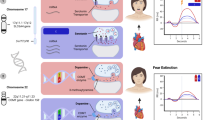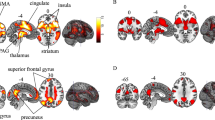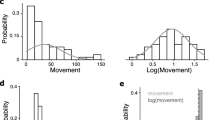Abstract
Anxiety-related behaviors are closely linked to neural circuits relaying fear-specific information to the amygdala. Many of these circuits, like those underlying processing of innate fear, are remarkably well understood. Recent imaging studies have contributed to this knowledge by discriminating more detailed corticoamygdalar associations mediating processing fear and anxiety. However, little is known about the underlying molecular mechanisms. We used the acoustic startle paradigm to investigate the impact of molecular genetic variation of serotonergic function on the acoustic startle response and its fear potentiation. Startle magnitudes to noise bursts as measured with the eye blink response were recorded in 66 healthy volunteers under four conditions: presenting unpleasant and pleasant affective pictures as well as neutral pictures, and presenting the startle stimulus without additional stimuli as a baseline. Subjects were genotyped for functional polymorphism in the transcriptional control region of the serotonin transporter gene (5-hydroxytryptamine transporter gene-linked region: 5-HTTLPR). Analyses of variance revealed a significant effect of 5-HTTLPR on overall startle responses across conditions. Carriers of the short (s) allele exhibited stronger startle responses than l/l homozygotes. However, we could not confirm our hypothesis of enhanced fear potentiation of the startle in s allele carriers. In conclusion, the results provide first evidence that the startle response is sensitive to genetic variation in the serotonin pathway. Despite some issues remaining to be resolved, the startle paradigm may provide a valuable endophenotype of fear processing and underlying serotonergic influences.
This is a preview of subscription content, access via your institution
Access options
Subscribe to this journal
Receive 12 print issues and online access
$259.00 per year
only $21.58 per issue
Buy this article
- Purchase on Springer Link
- Instant access to full article PDF
Prices may be subject to local taxes which are calculated during checkout

Similar content being viewed by others
References
Bradley MM, Lang PJ . Measuring emotion: behavior, feeling, and physiology. In: Lane R, Nadel W (eds). Cognitive Neuroscience of Emotion. Oxford University Press: New York, 2000, pp 242–276.
Konorski J . Integrative Activity of the Brain: An Interdisciplinary Approach. University of Chicago Press: Chicago, 1967.
Davis M, Whalen PJ . The amygdala: vigilance and emotion. Mol Psychiatry 2001; 6: 13–34.
Hariri AR, Mattay VS, Tessitore A, Kolachana B, Fera F, Goldman D, Egan MF et al. Serotonin transporter genetic variation and the response of the human amygdala. Science 2002; 297: 400–403.
Canli T, Omura K, Haas BW, Fallgatter A, Constable RT, Lesch KP . Beyond affect: a role for genetic variation of the serotonin transporter in neural activation during a cognitive attention task. Proc Natl Acad Sci USA 2005; 102: 12224–12229.
Heinz A, Braus DF, Smolka MN, Wrase J, Puls I, Hermann D et al. Amygdala–prefrontal coupling depends on a genetic variation of the serotonin transporter. Nat Neurosci 2005; 8: 20–21.
Pezawas L, Meyer-Lindenberg A, Drabant BA, Verchinski BA, Munoz KE, Kolachana BS et al. 5-HTTLPR polymorphism impacts human cingulate–amygdala interactions: a genetic susceptibility mechanism for depression. Nat Neurosci 2005; 8: 828–834.
Nemeroff CB, Owens MJ . Treatment of mood disorders. Nat Neurosci 2002; 5(Suppl): 1068–1070.
Lesch K-P, Bengel D, Heils A, Sabol SZ, Greenberg BD, Petri S et al. Association of anxiety-related traits with a polymorphism in the serotonin transporter gene regulatory region. Science 1996; 274: 1527–1539.
Hariri AR, Drabant BA, Munoz KE, Kolachana BS, Mattay VS, Egan MF et al. A susceptibility gene for affective disorders and the response of the human amygdala. Arch Gen Psychiatry 2005; 62: 146–152.
Leaton RN, Cranney J . Potentiation of the acoustic startle response by conditioned stimulus paired with acoustic startle stimulus in rats. J Exp Psychol Anim Behav Process 1990; 16: 279–287.
Davis M, Falls WA, Campeau S, Kim M . Fear-potentiated startle: a neural and pharmacological analysis. Behav Brain Res 1993; 58: 175–198.
LeDoux JE . Emotion circuits in the brain. Annu Rev Neurosci 2000; 23: 155–184.
Davis M . Neurobiology of fear responses: the role of the amygdala. J Neuropsychiatry Clin Neurosci 1997; 9: 382–402 (review).
Svensson L, Ahlenius S . Enhancement by the putative 5-HT receptor agonist 8-OH-2-(di-n-propylamino)tetralin of the acoustic startle response in the rat. Psychopharmacology (Berlin) 1983; 79: 104–107.
Kehne JH, Cassella JV, Davis M . Anxiolytic effects of buspirone and gepirone in the fear-potentiated startle paradigm. Psychopharmacology (Berlin) 1988; 94: 8–13.
Nanry KP, Tilson HA . The role of 5HT1A receptors in the modulation of the acoustic startle reflex in rats. Psychopharmacology (Berlin) 1989; 97: 507–513.
McQueen DA, Overstreet DH, Ardayfio PA, Commissaris RL . Acoustic startle, conditioned startle potentiation and the effects of 8-OH-DPAT and busprione in rats selectively bred for differences in 8-OH-DPAT-induced hypothermia. Behav Pharmacol 2001; 12: 509–516.
Mansbach RS, Geyer MA . Blockade of potentiated startle responding in rats by 5-hydroxytryptamine1A receptor ligands. Eur J Pharmacol 1988; 156: 375–383.
Liechti ME, Geyer MA, Hell D, Vollenweider FX . Effects of MDMA (ecstasy) on prepulse inhibition and habituation of startle in humans after pretreatment with citalopram, haloperidol, or ketanserin. Neuropsychopharmacology 2001; 24: 240–252.
Phillips MA, Langley RW, Bradshaw CM, Szabadi E . The effects of some antidepressant drugs on prepulse inhibition of the acoustic startle (eyeblink) response and the N1/P2 auditory evoked response in man. J Psychopharmacol 2000; 14: 40–45.
Quednow BB, Kuhn KU, Stelzenmueller R, Hoenig K, Maier W, Wagner M . Effects of serotonergic and noradrenergic antidepressants on auditory startle response in patients with major depression. Psychopharmacology (Berlin) 2004; 175: 399–406.
Harmer CJ, Shelley NC, Cowen PJ, Goodwin GM . Increased positive versus negative affective perception and memory in healthy volunteers following selective serotonin and norepinephrine reuptake inhibition. Am J Psychiatry 2004; 161: 1256–1263.
Murphy SE, Longhitano C, Ayres RE, Cowen PJ, Harmer CJ . Tryptophan supplementation induces a positive bias in the processing of emotional material in healthy female volunteers. Psychopharmacology (Berlin) 2006; 187: 121–130.
Hayward G, Goodwin GM, Cowen PJ, Harmer CJ . Low-dose tryptophan depletion in recovered depressed patients induces changes in cognitive processing without depressive symptoms. Biol Psychiatry 2005; 57: 517–524.
Phillips MA, Oxtoby EK, Langley RW, Bradshaw CM, Szabadi E . Effects of acute tryptophan depletion on prepulse inhibition of the acoustic startle (eyeblink) response and the N1/P2 auditory evoked response in man. J Psychopharmacol 2000; 14: 258–265.
Lang PJ, Bradley MM, Cuthbert BN . International Affective Picture System (IAPS): Instruction Manual and Affective Ratings. Technical Report A-4. Center for Research in Psychophysiology, University of Florida: Gainesville, FL, 1999.
Ekman P, Friesen WV . Pictures of Facial Affect. Consulting Psychologists Press: Palo Alto, CA, 1976.
Lang PJ . Behavioral treatment and bio-behavioral assessment: computer applications. In: Sidowski JB, Johnson JH, Williams TA (eds). Technology in Mental Health Care Delivery Systems. Ablex: Norwood, NJ, 1980, pp 119–137.
Rekling JC, Funk GD, Bayliss DA, Dong XW, Feldman JL . Synaptic control of motoneuronal excitability. Physiol Rev 2000; 80: 767–852.
Lingenhöhl K, Friauf E . Giant neurons in the rat reticular formation: a sensorimotor interface in the elementary acoustic startle circuit? J Neurosci 1994; 14: 1176–1194.
Yeomans JS, Frankland PW . The acoustic startle reflex: neurons and connections. Brain Res Brain Res Rev 1996; 21: 301–314.
Koch M . The neurobiology of startle. Prog Neurobiol 1999; 59: 107–128.
Ebert U, Koch M . Acoustic startle-evoked potentials in the rat amygdala: effect of kindling. Physiol Behav 1997; 62: 557–562.
Funayama ES, Grillon C, Davis M, Phelps EA . A double dissociation in the affective modulation of startle in humans: effects of unilateral temporal lobectomy. J Cogn Neurosci 2001; 13: 721–729.
Angrilli A, Mauri A, Palomba D, Flor H, Birbaumer N, Sartori G, di Paola F . Startle reflex and emotion modulation impairment after a right amygdala lesion. Brain 1996; 119: 1991–2000.
Kettle JW, Andrewes DG, Allen NB . Lateralization of the startle reflex circuit in humans: an examination with monaural probes following unilateral temporal lobe resection. Behav Neurosci 2006; 120: 24–39.
Vrana SR, Spence EL, Lang PJ . The startle probe response: a new measure of emotion? J Abnorm Psychol 1988; 97: 487–491.
Lang PJ, Bradley MM, Cuthbert BN . Emotion, attention, and the startle reflex. Psychol Rev 1990; 97: 377–395.
Bradley MM, Codispoti M, Cuthbert BN, Lang PJ . Emotion and motivation I: defensive and appetitive reactions in picture processing. Emotion 2001; 1: 276–298.
Gallinat J, Senkowski D, Wernicke C, Juckel G, Becker I, Sander T et al. Allelic variants of the functional promoter polymorphism of the human serotonin transporter gene is associated with auditory cortical stimulus processing. Neuropsychopharmacology 2003; 28: 530–532.
Strobel A, Debener S, Schmidt D, Hunnerkopf R, Lesch KP, Brocke B . Allelic variation in serotonin transporter function associated with the intensity dependence of the auditory evoked potential. Am J Med Genet B 2003; 118: 41–47.
Hensch T, Wargelius HL, Herold U, Lesch KP, Oreland L, Brocke B. (in press) Further evidence for an association of 5-HTTLPR with intensity dependence of auditory-evoked potentials. Neuropsychopharmacology 2006; 18: 2047–2054.
Fallgatter A, Jatzke S, Bartsch A, Hamelbeck B, Lesch KP . Serotonin transporter promoter polymorphism influences topography of inhibitory motor control. Int J Neuropsychopharmocology 1999; 2: 115–120.
Fallgatter AJ, Herrmann MJ, Roemmler J, Ehlis AC, Wagener A, Heidrich A et al. Allelic variation of serotonin transporter function modulates the brain electrical response for error processing. Neuropsychopharmacology 2004; 29: 1506–1511.
Anders S, Lotze M, Erb M, Grodd W, Birbaumer N . Brain activity underlying emotional valence and arousal: a response-related fMRI study. Hum Brain Mapp 2004; 23: 200–209.
Acknowledgements
We thank N Steigerwald for excellent technical assistance in DNA sample processing and genotyping and U Buhss for excellent work in processing and analyzing the EMG data. This work was supported by the Deutsche Forschungsgemeinschaft (KI 537/20-2 and KFO 125/1-1 to CPJ and KPL).
Author information
Authors and Affiliations
Corresponding author
Rights and permissions
About this article
Cite this article
Brocke, B., Armbruster, D., Muller, J. et al. Serotonin transporter gene variation impacts innate fear processing: acoustic startle response and emotional startle. Mol Psychiatry 11, 1106–1112 (2006). https://doi.org/10.1038/sj.mp.4001908
Received:
Revised:
Accepted:
Published:
Issue Date:
DOI: https://doi.org/10.1038/sj.mp.4001908
Keywords
This article is cited by
-
Studies of the 5-HTTLPR Serotonin Transporter Polymorphism (literature review)
Neuroscience and Behavioral Physiology (2022)
-
Monoamine-Sensitive Developmental Periods Impacting Adult Emotional and Cognitive Behaviors
Neuropsychopharmacology (2015)
-
Underlying Mechanisms of Gene–Environment Interactions in Externalizing Behavior: A Systematic Review and Search for Theoretical Mechanisms
Clinical Child and Family Psychology Review (2015)
-
Therapygenetics: anterior cingulate cortex–amygdala coupling is associated with 5-HTTLPR and treatment response in panic disorder with agoraphobia
Journal of Neural Transmission (2015)
-
Anxiety disorders: genetic mechanisms
e-Neuroforum (2013)



